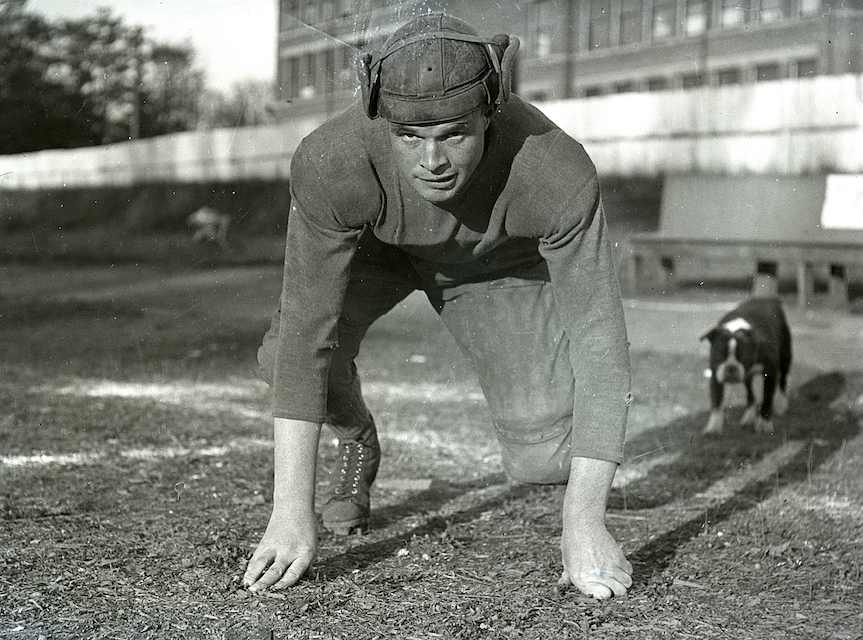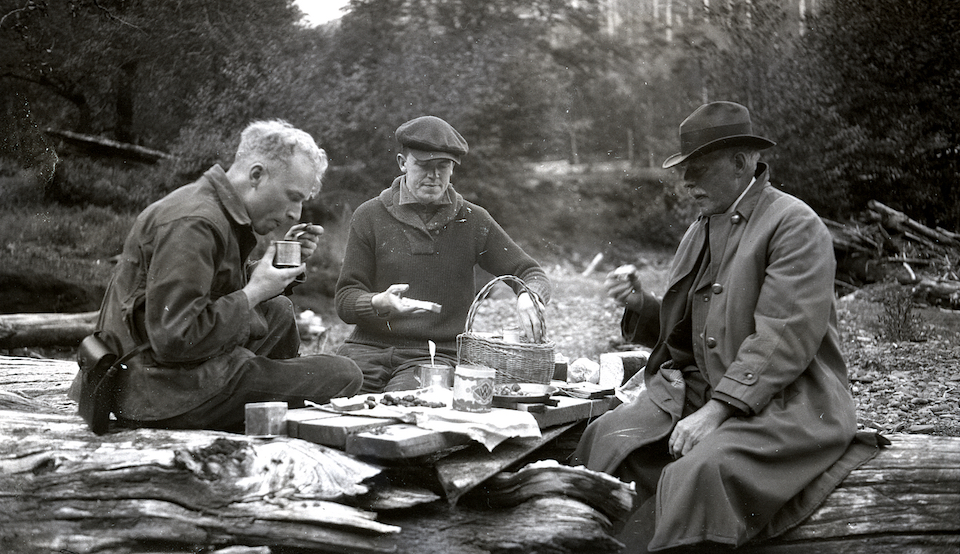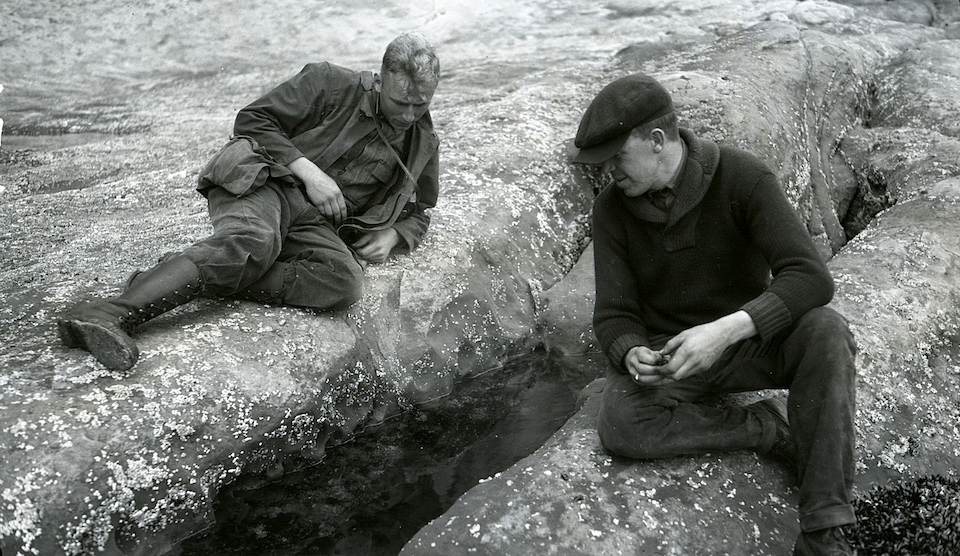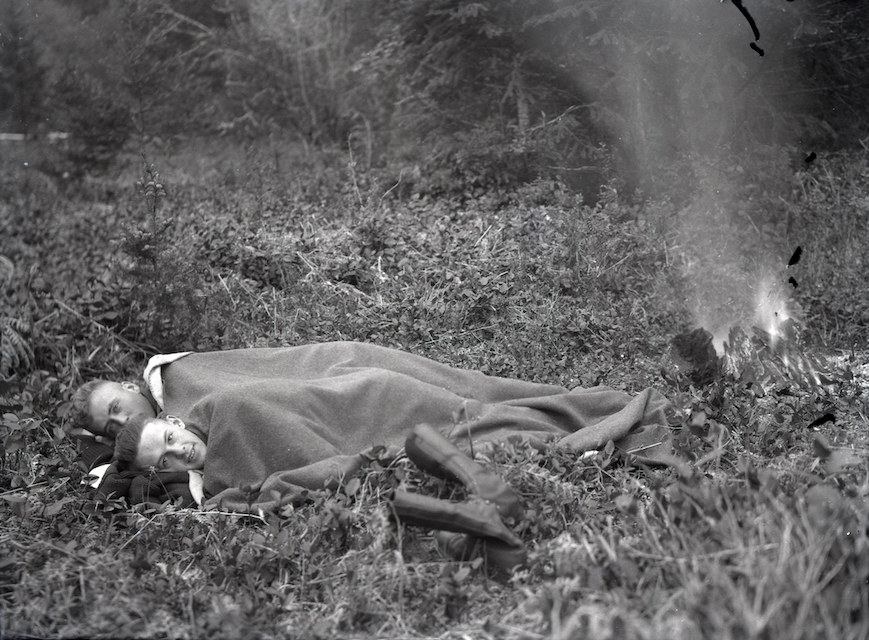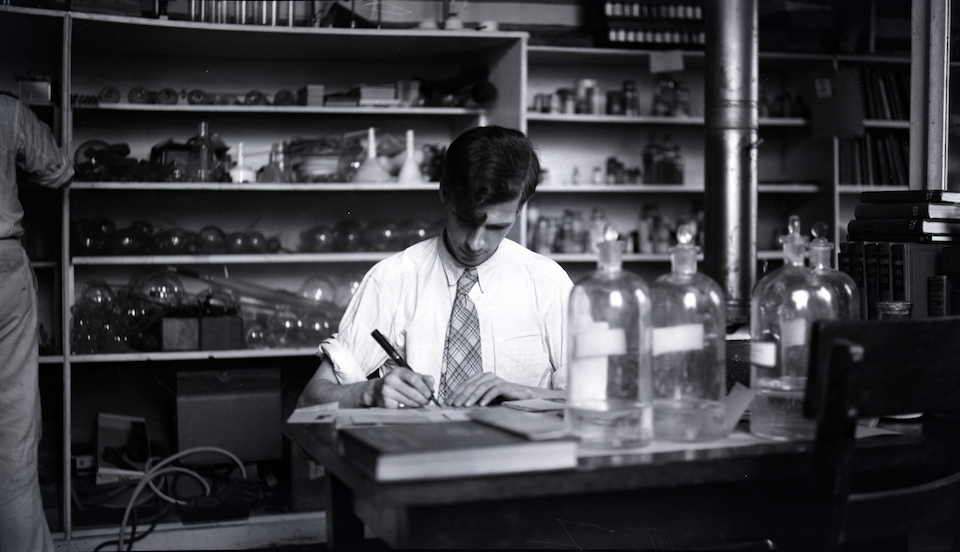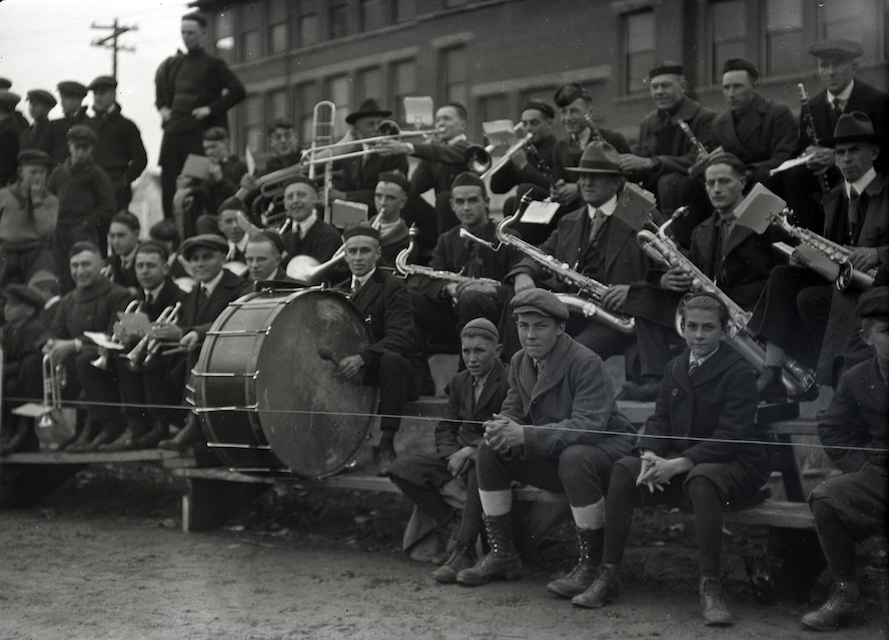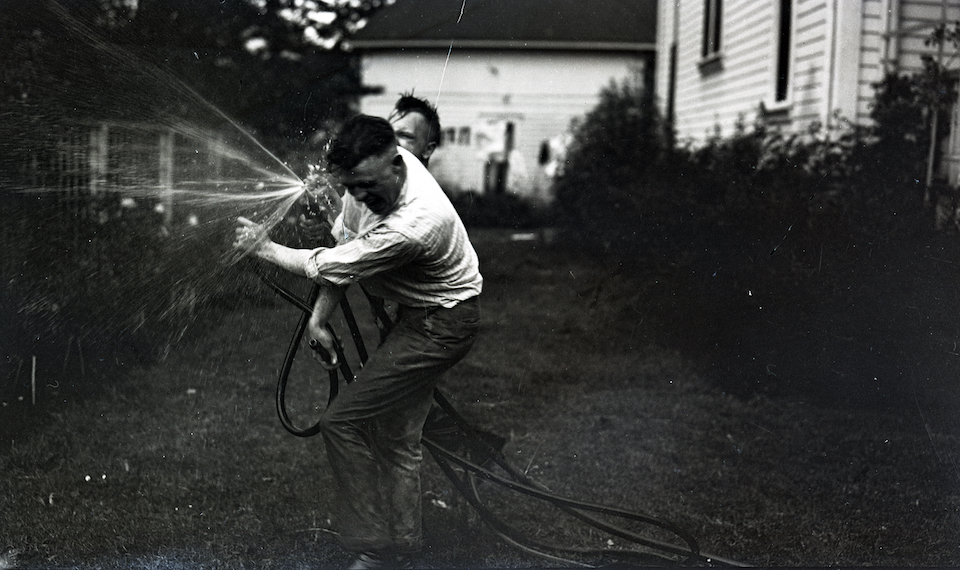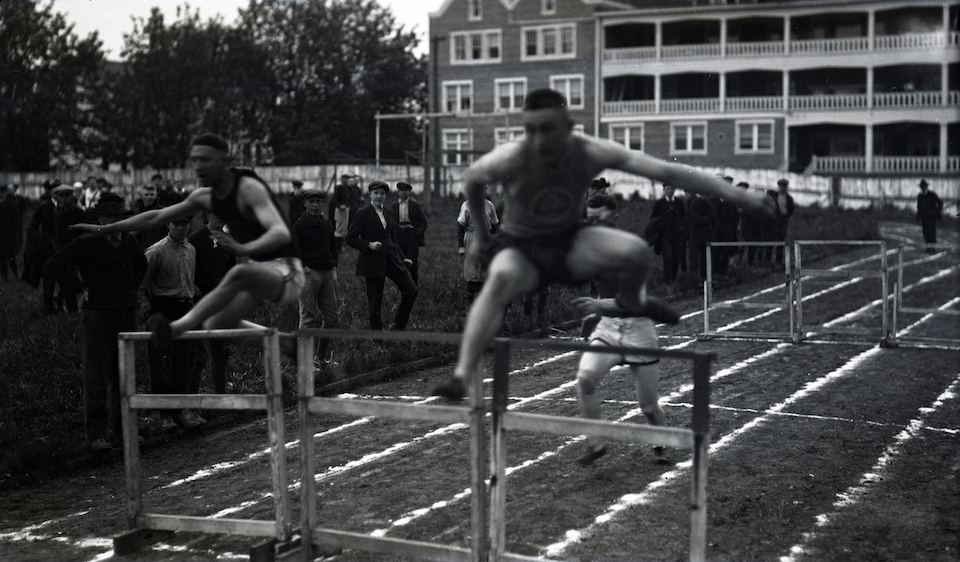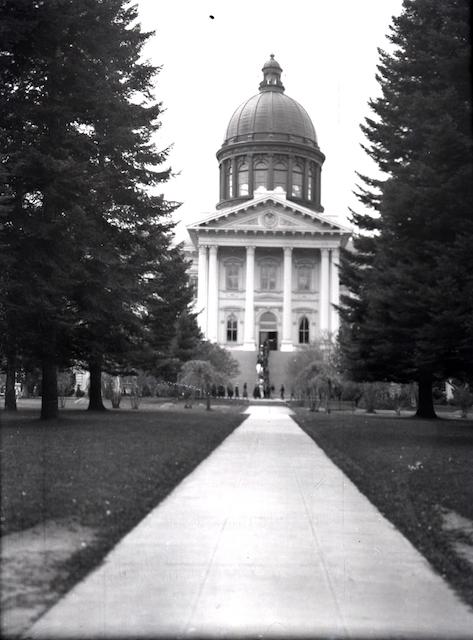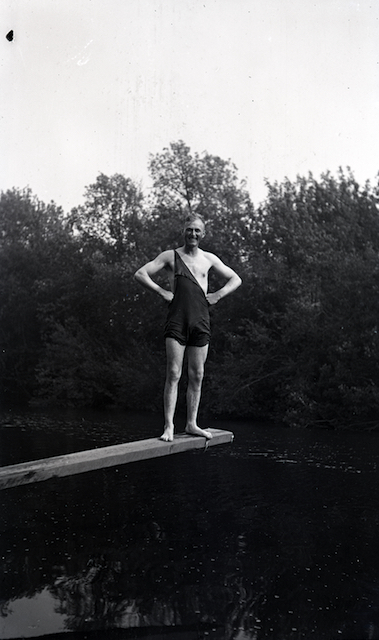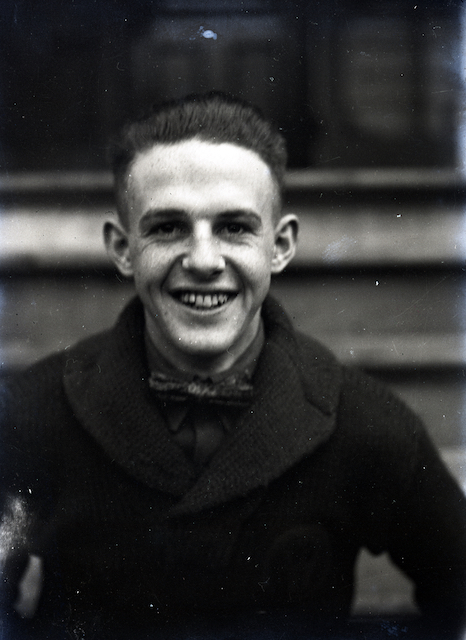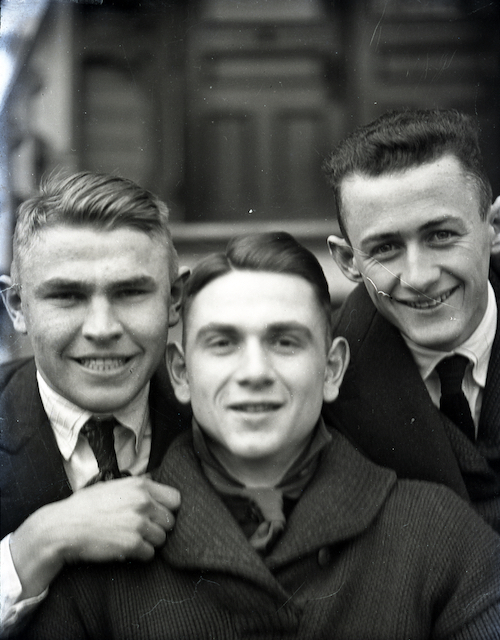written by Bronte Dod | images courtesy of The Vernor Martin Sackett Negatives, Archives and Special Collections, Mark O. Hatfield Library, Willamette University
For three years, I wore white gloves at my college job. I worked in the University Archives at Willamette University. It’s there, in the back corner of the library, in a room without any windows, where I found Vernor Martin Sackett, or rather, his photographs.
Born in 1898, Sackett grew up in the Willamette Valley, served in the First World War and graduated from Willamette University in 1922. His photo collection was anonymously donated to Willamette and kept in the possession of a professor until the archives formed in 2006.
Beyond that, Sackett was a mystery—to me and the archives. What started as a campus job quickly turned into a personal obsession, and, in the end, my senior thesis. I spent three years trying to know and understand the people who stared back at me through the images.
Taken between 1918 and 1930, Sackett’s candid documentary photographs captured the heart of university life.
He documented early days of football, when protective padding didn’t exist and more mud than grass filled the eld. He photographed graduating seniors walking through campus, downtown Salem and the old state capitol building, which burnt down a decade later. There are images of his first dates with his girlfriend Mary Notson, who became his wife. There are images of students drinking in basement bars during Prohibition. He traveled and snapped pictures of Silver Falls, the Oregon Coast and the Wallowa Mountains.
The black and white images showed the same places where I lived, studied and explored as a student at Willamette in 2012, almost a century after Sackett. There are different people and different clothes in the photographs, but the locations and the sentiments remain the same.
In the three years of working with the photographs in the archives and academically, I uncovered more details about the lives of his friends and family than I did about him. Always behind the camera, Sackett left a quiet legacy in his photographs, preserving his cultural memory for generations to come.


